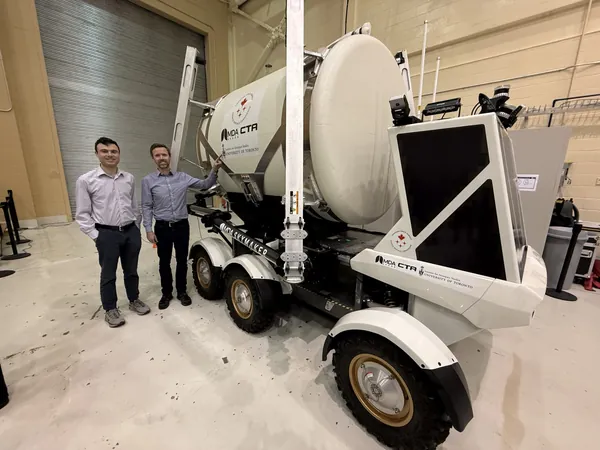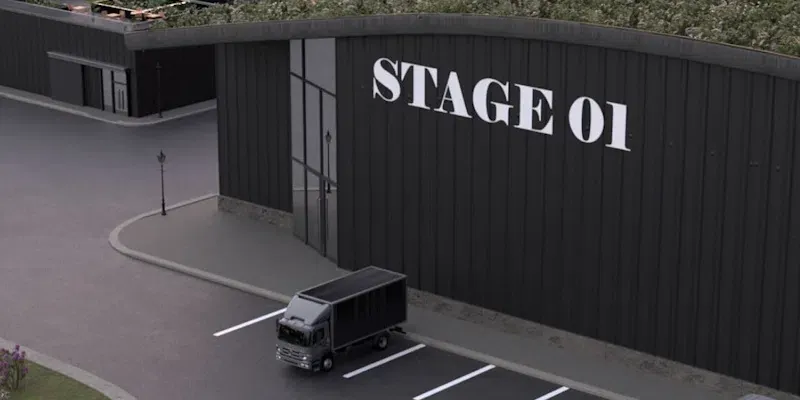
Revolutionizing Lunar Logistics: University of Toronto's Bold Leap into Moon Cargo Transport
2025-09-03
Author: Emily
Pioneering Autonomous Lunar Transport
Researchers from the University of Toronto Institute for Aerospace Studies (UTIAS) are on the brink of a groundbreaking advancement that could transform how cargo is transported on the moon. This innovative effort aims to make lunar missions safer and more efficient for astronauts.
Navigating the Moon's Challenges
Led by Professor Tim Barfoot and PhD student Alec Krawciw, the team is developing cutting-edge technology for Canada's proposed Lunar Utility Vehicle (LUV). This mission addresses a crucial challenge: transporting cargo between the flat landing site and a habitat location, approximately five kilometers away, which needs protection from harsh lunar radiation.
"Astronauts will face the difficult task of transferring all cargo from the shuttle to the secure habitat," explains Barfoot, who also directs the University of Toronto Robotics Institute.
A Game-Changer in Space Rovers
Unlike traditional planetary rovers that traverse various terrains to gather data, the LUV will follow a consistent route to shuttle supplies to astronauts. This pioneering approach makes Barfoot’s visual teach-and-repeat (VT&R) navigation framework an ideal solution.
"These algorithms allow us to guide the rover along a preset path, and once it learns that route, it can repeat it autonomously, saving astronauts valuable time and energy," Barfoot added.
Bringing Theory to Reality
In a significant step forward, Krawciw is integrating this autonomous driving technology with the Canadian Space Agency’s Lunar Exploration Light Rover (LELR). In December 2024, they conducted critical field tests simulating lunar conditions at an analogue site in Montreal.
"We faced unexpected challenges while adapting our software to the LELR, including a delay in command feedback that required us to innovate a new semi-autonomous teaching approach using shorter path segments," Krawciw recounted.
Preparing for the Future of Lunar Exploration
After a successful trial, the team was selected by the Canadian Space Agency in July 2025 for an early-phase study for Canada's new Lunar Utility Vehicle, part of the CSA's ambitious Lunar Surface Exploration Initiative and aligned with NASA's Artemis program to establish a sustainable human presence on the moon.
As Krawciw gears up for the next phase, he focuses on ensuring that the system is not only reliable but user-friendly for operators working in challenging conditions.
"Continuous field testing has taught us invaluable lessons. Our goal is to create a robust and efficient system that can handle real-world lunar operations, shaping how we approach the next steps in development," he concluded.









 Brasil (PT)
Brasil (PT)
 Canada (EN)
Canada (EN)
 Chile (ES)
Chile (ES)
 Česko (CS)
Česko (CS)
 대한민국 (KO)
대한민국 (KO)
 España (ES)
España (ES)
 France (FR)
France (FR)
 Hong Kong (EN)
Hong Kong (EN)
 Italia (IT)
Italia (IT)
 日本 (JA)
日本 (JA)
 Magyarország (HU)
Magyarország (HU)
 Norge (NO)
Norge (NO)
 Polska (PL)
Polska (PL)
 Schweiz (DE)
Schweiz (DE)
 Singapore (EN)
Singapore (EN)
 Sverige (SV)
Sverige (SV)
 Suomi (FI)
Suomi (FI)
 Türkiye (TR)
Türkiye (TR)
 الإمارات العربية المتحدة (AR)
الإمارات العربية المتحدة (AR)